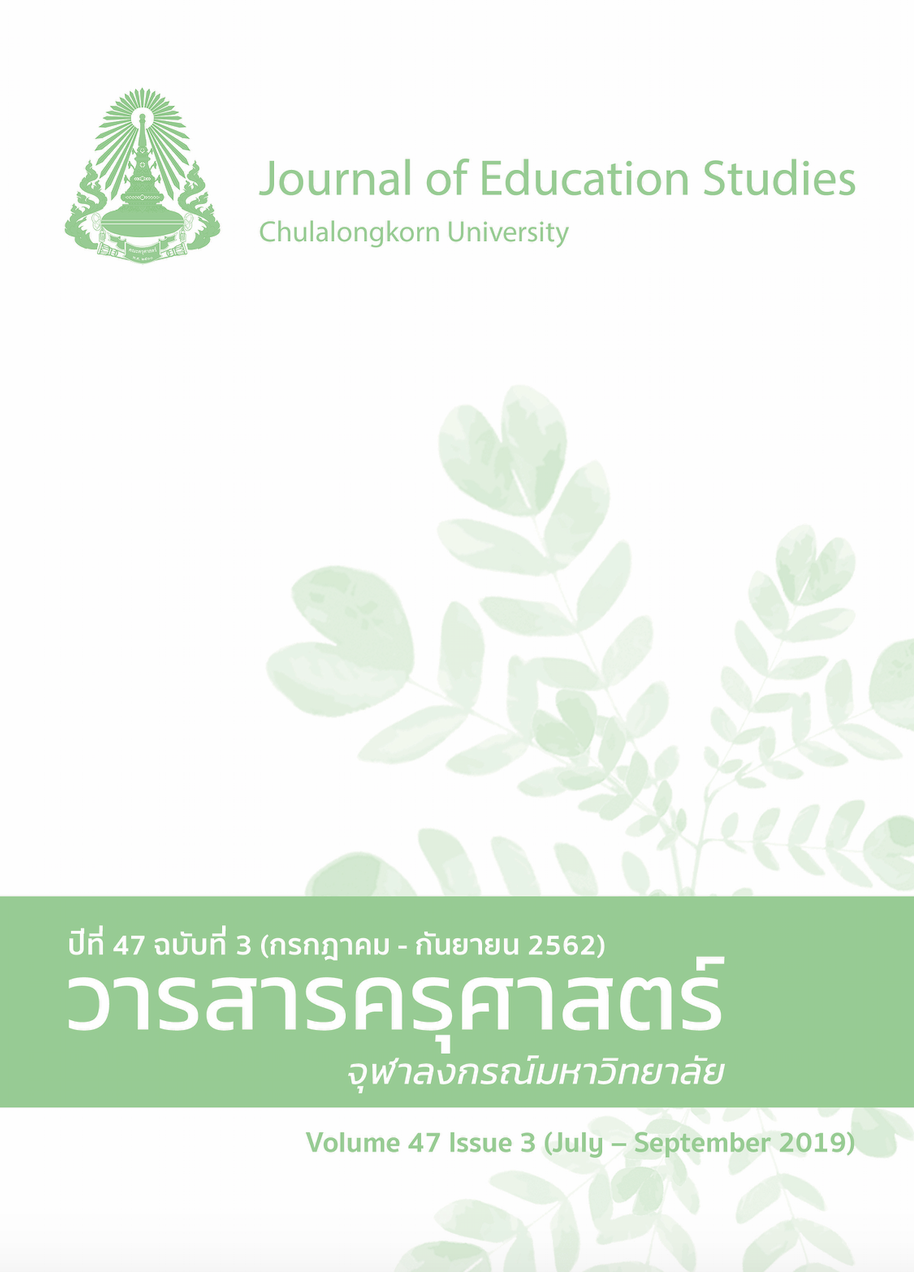The Effectiveness of Using Electronics Augmented Reality (AR) Based Social Story Book to Decrease Inappropriate Behaviors of Children with Autism
Keywords:
AUGMENTED REALITY (AR), CHILDREN WITH AUTISM, INAPPROPRIATE BEHAVIOR, SOCIAL SKILLSAbstract
This research aimed 1) to investigate the inappropriate behaviors of children with autism, 2) to examine the effectiveness of the electronics augmented reality (AR) based social story book used for decreasing the inappropriate autistic behaviors. The target group of this specific study was 5 children with autism. The study adopted a single subject research design, ABA, which involved exploring the social behavioral problems of 5 children with autism, analyzing data and creating social story books, and developing those social story books into 5 electronics augmented reality (AR) based social story books (one story per child). The social behavioral problems of children with autism were 1) speaking inappropriately, 2) being unable to control emotions, 3) being impatient, 4) having difficulties with social interaction, and 5) unwilling to have flexible routine. The data were collected using an ABA research design (Baseline–Intervention–Withdrawal). The research found that the overall quality of augmented reality book design was at good level (M = 4.30, SD = 0.27). It was identified that the use of properly constructed AR book can be effective in promoting the social skills and decreasing the inappropriate behaviors of children with autism.
References
Arrayavinyoo, P. (2003). Teaching children with autism. Bangkok: Wankaew.
Azuma, R. T. (1997). A survey of augmented reality. Presence: Teleoperators & Virtual Environments, 6(4), 355-385.
Caudell, T. P., & Mizell, D. W. (1992). Augmented reality: An application of heads-up display technology to manual manufacturing processes. In Proceedings of the twenty-fifth Hawaii international conference on system sciences Vol. 2 (pp. 659-669). Kauai Hawaii, USA.
Delello, J. A. (2014). Insights from pre-service teachers using science-based augmented reality. Journal of Computers in Education, 1(4), 294-311.
Gray, C. A. (2004). Social stories™ 10.1: The new defining criteria and guidelines. Jenison Autism Journal: Creative Ideas in Practice, 15(4), 2–21.
Gray, C. A., & Garland, J. D. (1993). Social stories: Improving responses of students with autism with accurate social information. Focus on Autistic Behavior, 8(1), 1-10.
Khantreejitranon, A. (2018). Using a social story invention to decrease inappropriate behavior of preschool children with autism. Kasetsart Journal of Social Sciences, 39(1), 90-97.
Kuttler, S., Myles, B. S., & Carlson, J. K. (1998). The use of social story to reduce precursors to tantrum in a student with autism. Focus on Autism and other Developmental Disabilities, 13(3), 176-182.
Lin, C. Y., Chai, H. C., Wang, J. Y., Chen, C. J., Liu, Y. H., Chen, C. W., & Huang, Y. M. (2016). Augmented reality in educational activities for children with disabilities. Displays, 42,
51-54.
Perez-Lopez, D., & Contero, M. (2013). Delivering educational multimedia contents through an augmental reality application: A case study on its impact on knowledge acquisition and retention. Turkish Online Journal of Educational Technology-TOJET, 12(4), 19-28.
Sansosti, F. J., Powell-Smith, K. A., & Kincaid, D. (2004). A research synthesis of social story inventions for children with autism spectrum-disorders. Focus on Autism and Other Developmental Disabilities, 19(4), 194-204.
Sirakaya, M., & Cakmak, E. K. (2016). Effects of augmented reality on students achievement and self-efficacy in vocational education and training. International Journal for
Research in Vocational Education and Training, 5(1), 1-18.
Staley, M. J. (2001). An investigation of social-story effectiveness using reversal and multiple baseline designs (Unpublished Doctoral Dissertation). University of Kansas, Kansas.
Swaine, J. M. (2004). Teaching language skills to children with autism through the use of social stories (Unpublished Doctoral Dissertation). Dalhousie University, Canada.
Teplin, S. D. (1997). Autism and related disorder: Developmental–Behavioral pediatrics (3rd ed.). Philadelphia, PA: Saunders.



